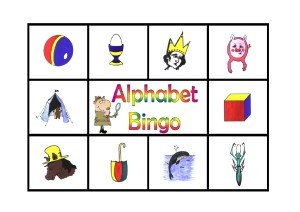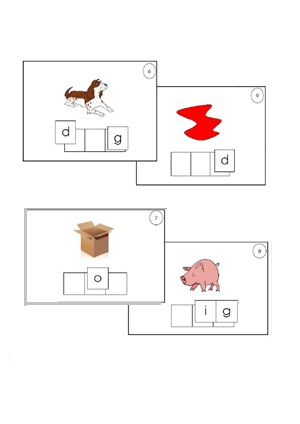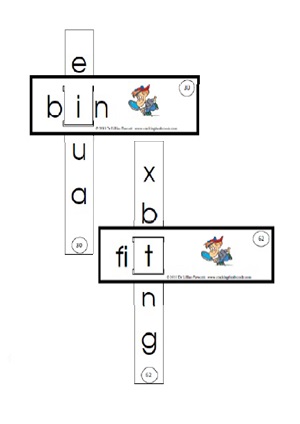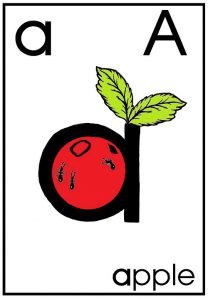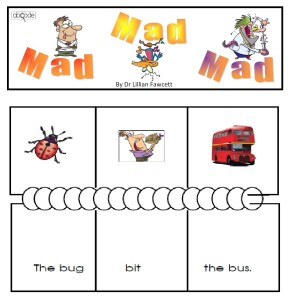Sample of the Vocabulary Development sections: Multisensory Reading Program Level 1

Vocabulary development is essential to becoming a competent reader.
- At the end of each unit, there is a list of 10 words.
- The words only contain the letters that the student is currently learning or has previously learned.
- In addition, only words containing the common pronunciation of the letters are used.
In the first session:
- Students are required to say the sound represented by each of the letters in the word and then blend the sounds together to form the word (e.g., /n/ /a/ /p/ /nap/).
- As each letter is read the student should trace over the letter with his/her finger.
- In this way students are using their sense of sight (as they look at the word), their sense of hearing (as they say the sounds) and their sense of touch (as they trace over the letters).
- Research shows that this type of multisensory learning aids in retention and recall.
Each day, the student is required to:
- Practise remembering each group of words. If a word isn’t automatically recalled, it is practised.
- Once the first group of words has been practise 3x, the student reads the whole list and the time taken is recorded in the boxes below the words.
- The student then practises remembering the next group of words.
- Once this group of words has been practised 3x, the student again reads the whole list and the time is recorded.
- The student then practises remembering the last group of words.
- Once this group of words has been practised 3x, the student reads the whole list one more time.
- Each day, start on a different group of words.
- If the student is finding a few words difficult to remember, spend time on just those words (e.g., repeat the word several times, put the word into a sentence, practise reading the word with the words on either side, etc). Sometimes it is useful to supply additional cues (e.g., circle the letter(s) causing difficulty or draw a picture cue).
Ensure students place two or three fingers of their writing hand under each word as it is being read.
- This helps develop eye tracking skills.
The goal is for the student to learn to read the ten words in 10 seconds (or less).
- Research shows that reading the words at this rate (i.e., 1 word per second) is an indicator that the words have been stored in long-term memory and that students will be able to return to these words and still read them accurately in several weeks time.
The second exercise is exercise is designed to help the student rapidly recognise common letter strings and therefore make the decoding process easier.
- Help the student decode the word on the left hand side.
- Draw the student’s attention to the fact that the same sequence of letters (written in bold font) is located inside the next two words to the right. Consequently, the student should immediately be able to say that part of the word without ‘resounding’.
- Then it is just a matter of substituting the letters.
- Initially, you may need to do this exercise using cards with one letter written on each card.
- The student can watch as you change the one card to make the new word. Once the student can competently do the exercise in this manner, the letter cards can be substituted for
counters (one counter for each sound). The counter representing the letter sound to be changed is then replaced with a different coloured counter. The next step is for the student to do the
exercise by reading the words in the book. - Note: There are three variations.
* The first letter changes.
* The last letter changes.
* The middle vowel changes. - For many students it will be sufficient just to focus on the words in which the first letter is changed.

Click on the images to purchase.
Fantastic results from a well structured program.” Angie (Mother) – Sorrento.
Reading Accuracy Age: Before: 7 years 0 months After: 8 years 8 months
Reading Comprehension Age: Before: 6 years 7 months After: 7 years 11 months
Spelling Age: Before: 7 years 1 month After: 8 years 3 months
Known graphemes: Before: 14 After: 42
Number of lessons: 15

If you have any questions or need assistance, please send Lillian a message.




